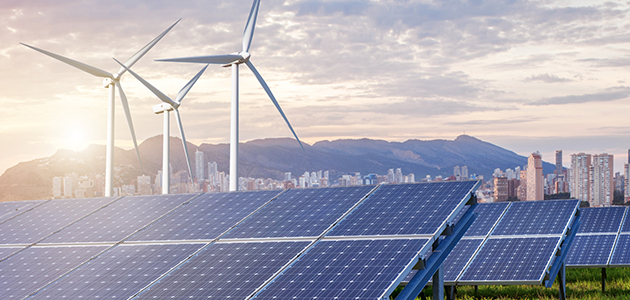From Supplying Current to Supplying Voltage, a Look at the Future Grid
Back to Top
As a supplier of products built around improving power reliability, S&C doesn’t really care how power is generated. However, we have a very forward-looking view on what the future grid eventually will look like.
Today’s ‘old grid’ simply supplies current. Current flows, and the meter spins. What’s changing is, and we’ve seen this in Hawaii, is a lot of photovoltaic generation is coming from people’s houses. During the day, they’re net metering out, and at night they’re bringing power in. They’re actually taking generation off of the grid because they don’t need it anymore. They can get it from other places.
That situation has had an unexpected consequence in that it has made the grid more fragile by creating a situation where utilities have load to shed because of current-frequency issues. Moreover, they’re getting voltage-fluctuation issues as well.
During a low-carbon conference about 4 years ago, a paper described how solar panels on Scottish houses were causing the voltage on the grid to exceed the limits spelled out in ANSI standard—something like 260 to 280 volts where 240 volts is normal. And as Hawaii moves to 100% renewables, it will face growing problems with maintaining steady frequency and voltage.
So I would argue the future of the grid is moving from supplying current to supplying voltage. The one thing that’s common with today’s grid is the need to improve reliability. If you don’t perform solidly, no matter what you’re doing, you’re not going to have purchasers, you’re not going to have people trading power, you’re not going to be able to keep your lights on, and you’re not going to be able to generate power during the day and consume it at night regularly.
New advanced solar inverters, which enable utilities to increase or decrease power based on immediate consumer need, also will have problems. If they experience more than a 24-second outage, perhaps caused by simply having low voltage (like a brown out), they will lock out for 5 minutes. Now, if you’ve got a whole grid full of these 10-kw inverters, the problem can intensify pretty quickly.
The grid’s going to have to have more ability to help voltage. We’ve designed it to have current go from here to there, and the voltage would be down here. Now the voltage will be all over the place. So voltage regulation is going to become an issue.
But the key thing is, as the blend changes in generation—regardless of whether it becomes 100 percent renewables—it’s going to create different problems on the grid. What’s common with all of the generation is the importance to focus on improving reliability, and that includes getting a handle on voltage and frequency fluctuations.
I’d be interested in hearing your thoughts on how the grid is changing and where enhancing reliability is playing a role at your utility.